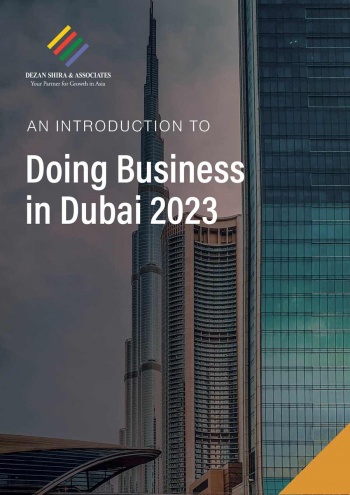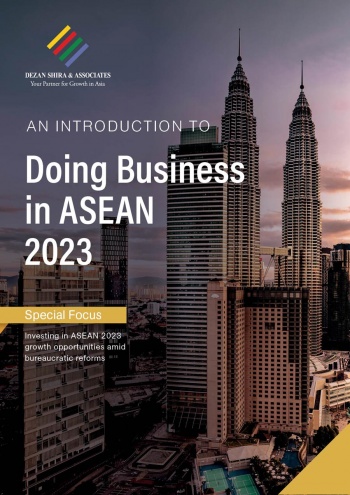IMF Revises Expectations for Saudi Arabia’s GDP Rebound
The IMF recently lowered its 2024 forecast for Saudi Arabia’s GDP to 2.7 percent. However, the organization also predicts a robust growth rate of 5.5 percent for 2025. These revisions stem from the kingdom’s decision to lower its oil production, which will negatively impact short-term GDP growth. Nevertheless, the Saudi move opens opportunities for growth in the non-oil sector.
By Lucia Brancaccio
The International Monetary Fund (IMF) recently revised its expectation for economic growth in Saudi Arabia, revealing a more pessimistic short-term outlook while highlighting the kingdom’s positive long-term resilience and the growth prospects of its non-oil sectors.
The IMF lowered its 2024 forecast for Saudi Arabia’s GDP to 2.7 percent, down from 4.0 percent forecast made last October. This downward revision is primarily attributed to the kingdom’s lower oil production.
Despite this, the IMF now also predicts a growth rate of 5.5 percent in 2025, an increase from its previous estimate of 4.5 percent issued in October 2023, showing optimism for the country’s economic prospects in the medium term.
These revisions were made based on data published in IMF’s January 2023 World Economic Outlook, which praised Saudi Arabia’s non-oil economy as “robust”.
Economic background
Saudi Arabia has long been a dominant force in the global oil sector, leveraging its substantial reserves to solidify its position as a key player.
Oil thus plays a pivotal role in Saudi Arabia’s economy, contributing approximately 40 percent to its GDP and accounting for nearly 90 percent of government revenues through exports.
Saudi Arabia is as one of the founding members of the Organization of the Petroleum Exporting Countries (OPEC). Along with other prominent oil-producing nations members of the organization, Saudi Arabia holds considerable influence in the shaping of oil global markets.
The country has the world’s second-largest proven oil reserves, trailing only Venezuela, and ranked as the second-largest oil producer in 2022.
This general overview of Saudi Arabia’s economy highlights the country’s heavy reliance and dependency on oil – a reality its government is keen to transform through economic diversification plans.
2023 economic performance
In 2023, member countries of OPEC+, which includes the 13 members of the organization alongside 10 other major oil producers like Russia, agreed to reduce oil outputs as a precautionary measure aimed at supporting market stability amidst rising interest rates in the West and a weakening global economy.
Initially targeting a voluntary cut of 1.16 million barrels per day (bpd) planned from May 2023 through the end of the year, the organization later opted for additional cuts totaling 2.2 million bpd, set to begin on January 1 and continuing until March 2024, contingent on market conditions. These were building upon previously implemented substantial cuts, resulting in a prolonged period of lower oil production.
These measures, coupled with the extended period of lower levels and the slowdown in oil prices and demand, had a notable impact on Saudi Arabia’s GDP in 2023. As a matter of fact, in line with the nation’s high reliance on oil output, its economy saw a decline of 0.9 percent that year, as expected by the IMF.
Saudi’s Vision 2023
Saudi Arabia’s heavy reliance on the oil sector started to be addressed already in 2016 with the implementation of the Saudi Vision 2030 program. This ambitious plan aims to diversify the national economy by expanding in sectors, such as tourism, manufacturing, and technology, thereby reducing dependence on oil production.
Vision 2030 envisions the creation of giga-projects and special economic zones, including the futuristic city of Neom, the Diriyah district of Riyadh, and Jeddah Central to drive economic growth and innovation.
Aligned with the diversification goals of Vision 2030, Saudi Aramco, a central player in the nation’s oil industry, on January 30, 2024, announced the suspension of its plan to increase oil production capacity from 12 million to 13 million bdp by 2027, following government direction. This decision reflects the current challenges in the global oil market, including oversupply and record-high production in the US, as well as slower-than-expected economic growth in China, the primary market for Saudi Arabia’s oil exports. By adjusting its plans in response to these market conditions, Aramco exemplifies Saudi Arabia’s commitment to stabilizing the global market while also aligning with the goals of Vision 2030.
Despite these efforts, Saudi Arabia still relies heavily on oil exports to sustain the development of Vision 2030 projects, highlighting the challenges the nation has to face in diversifying its income sources.
2024 and 2025 outlook
Despite the challenges posed by reducing reliance on oil and the IMF’s downward revision of Saudi Arabia’s 2024 GDP forecast to 2.7 percent, there are still reasons for optimism.
In 2023, despite the oil-sector downturn, Saudi Arabia’s non-oil sector demonstrated resilience, achieving a growth rate of 2.6 percent, spurred by strong domestic demand. This marked the first expansion since 2021, instilling optimism for the end of the recessionary period and paving the way for a successful transition towards a more diversified economic landscape. Furthermore, it opened up opportunities for sustained growth in the coming years.
This positive performance of the non-oil sector is anticipated to contribute to a rebound of 4.4 percent in 2024. According to the IMF, this upward trend is expected to continue and gradually grow throughout 2024, extending also into 2025, with a growth forecast of 5.5 percent.
Sustaining this performance, however, requires pursuing macroeconomic policies and maintaining the reform momentum that has characterized Saudi Arabia’s regulatory environment in recent years, and in turn attracting more foreign direct investments (FDI).
FDI and private investments play a crucial role in Vision 2030’s goal to diversify the economy. In line with this objective, the National Investment Strategy, published in 2021, set a target of around US$ 100 billion in annual FDI inflows until 2030, to be achieved through a series of regulatory reforms and special economic zones aimed at creating an attractive environment for FDI.
Despite considerable efforts and initiatives, investors seem to remain cautious. Saudi Arabia’s FDI net inflows totaled approximately US$28 billion (SAR105 billion) in 2022 and US$2.93 billion (SAR11 billion) in the first nine months of 2023, underscoring a discrepancy between the kingdom’s actual FDI and the targeted amount.
With Saudi Arabia still facing challenges in attracting FDI, it is necessary to continue the ongoing efforts to foster a more favorable environment for investments while diversifying economic revenue sources.
- Previous Article Saudi Arabia and Jordan Ink Memorandum of Cooperation to Support SMEs
- Next Article Dubai’s Tourism Sector: Outlook and Key Drivers





